After the Fire - The Role of Bushfires in Ecosystem Regeneration
Bushfires are often seen as destructive forces, wreaking havoc on landscapes and communities. However, beneath the ashes lies a fascinating story of resilience and regeneration. These natural events play a pivotal role in the health of many ecosystems, acting as a catalyst for renewal. As we delve into the role of bushfires, we uncover how they contribute to biodiversity, nutrient cycling, and the overall balance of nature. Understanding this phenomenon not only reshapes our perspective on fire but also highlights the intricate connections within our ecosystems.
Bushfires are not merely catastrophic events; they are essential components of many ecosystems. In fact, they promote biodiversity by clearing out old and decaying vegetation, making way for new growth. This process enhances nutrient cycling, allowing essential minerals and organic matter to return to the soil. By burning away the underbrush, fires create open spaces that enable sunlight to reach the forest floor, encouraging a variety of plant species to thrive. The result? A more diverse and vibrant ecosystem that supports a multitude of life forms.
Moreover, understanding the ecological significance of bushfires helps us appreciate their natural role in maintaining healthy landscapes. Just as a gardener prunes plants to encourage growth, nature uses fire as a tool for rejuvenation. This cycle of destruction and rebirth is not only beautiful but also vital for sustaining the intricate web of life that depends on these ecosystems.
Many species have developed remarkable adaptations to survive and even flourish in the aftermath of bushfires. For instance, certain plants possess fire-resistant traits that enable them to withstand extreme heat. These adaptations are essential for habitat recovery, allowing these species to rebound quickly after a fire. The resilience of these plants is akin to a phoenix rising from the ashes, showcasing the incredible power of nature to heal and regenerate.
Among the most fascinating adaptations are those found in fire-resistant flora. Some plants have evolved thick bark that protects vital tissues from fire damage, allowing them to survive and regrow rapidly. This is crucial for maintaining forest ecosystems after fire events. Additionally, many species have developed deep root systems that can access water and nutrients in the soil, ensuring their survival during the harsh conditions following a fire.
Interestingly, some plant species require the heat from fire to trigger seed germination. This phenomenon ensures that their offspring can grow in nutrient-rich soil, as the fire clears away competing vegetation. It's a remarkable example of nature's resilience and adaptability, demonstrating how life finds a way to continue even in the face of destruction. The cycle of life, death, and rebirth is beautifully illustrated in these processes, reminding us of the interconnectedness of all living things.
Trees with thick bark are another testament to nature's ingenuity. Their protective layers shield them from the flames, allowing for rapid regrowth after a fire. This adaptation is essential for maintaining forest ecosystems, as it ensures that these trees can continue to provide habitat and resources for countless species. In a way, these trees act as guardians of the forest, standing tall and resilient in the face of adversity.
Animals, too, exhibit various responses to bushfires. Some species migrate to safer areas, while others adapt their behaviors to cope with the changing environment. Understanding these responses is crucial for conservation efforts in fire-prone regions. Just as plants have evolved to thrive after fire, animals have developed strategies to survive and even benefit from these natural events.
After a bushfire, ecosystems undergo a remarkable recovery process that can lead to increased biodiversity. This recovery is not instantaneous; it involves several stages influenced by various factors, including soil health, climate, and the presence of invasive species. The journey from devastation to renewal is a testament to nature's resilience and ability to adapt.
One of the most significant benefits of bushfires is the enhancement of soil health. Fires release nutrients and improve soil structure, creating a fertile environment for new plant growth. This rejuvenation of the soil is critical for the overall health of the ecosystem, as it supports a diverse range of plant and animal life. It's like nature's way of hitting the reset button, allowing ecosystems to flourish once again.
However, post-fire environments can be susceptible to invasive species, which can disrupt the recovering ecosystem. Effective management strategies are essential to prevent these species from taking hold and overshadowing the native flora and fauna. Just as a gardener must tend to their plants to ensure a healthy garden, we must actively manage our ecosystems to protect their integrity and resilience.
- What role do bushfires play in biodiversity?
Bushfires promote biodiversity by clearing old vegetation, allowing new species to thrive and creating diverse habitats. - How do plants adapt to survive bushfires?
Many plants have developed fire-resistant traits such as thick bark and deep roots, enabling them to survive and regrow after fires. - Can bushfires improve soil health?
Yes, bushfires can enhance soil health by releasing nutrients and improving soil structure, creating a fertile environment for new growth. - What are the dangers of invasive species after a bushfire?
Invasive species can disrupt recovering ecosystems by outcompeting native species for resources, making effective management crucial.

The Ecological Importance of Bushfires
Bushfires, often viewed as devastating forces of nature, play an invaluable role in maintaining the health and balance of various ecosystems. These natural events are not just random occurrences; they are integral to the lifecycle of many plants and animals. In fact, they promote biodiversity and facilitate nutrient cycling, which are essential for thriving ecosystems. When we understand the ecological significance of bushfires, we can begin to appreciate their role in shaping landscapes and sustaining life.
One of the most fascinating aspects of bushfires is their ability to rejuvenate the land. When a fire sweeps through an area, it clears out old, dead vegetation, making way for new growth. This process is akin to a gardener pruning a plant to encourage healthier blooms. As the flames consume the old, they also enrich the soil with nutrients released from the charred organic matter. This nutrient cycling not only enhances soil fertility but also creates a fertile ground for new plants to germinate and flourish.
Moreover, bushfires can help control the spread of pests and diseases that might otherwise decimate plant populations. By burning away the old and unhealthy, fires can reset the ecological clock, allowing for a fresh start. This is particularly important in ecosystems where certain species might dominate and outcompete others, leading to a decrease in overall biodiversity. Bushfires can act as a natural check, ensuring that no single species can monopolize the resources available in an environment.
In addition to promoting biodiversity, bushfires also play a crucial role in the life cycles of various species. For instance, certain plants have adapted to thrive in post-fire environments. These adaptations can include seed germination that is triggered by the heat of the fire or the presence of smoke. This remarkable relationship between fire and flora highlights the intricate balance of nature, where destruction can lead to rejuvenation.
To further illustrate the ecological importance of bushfires, consider the following table that summarizes the key benefits:
| Benefit | Description |
|---|---|
| Biodiversity Promotion | Fires create opportunities for diverse plant and animal species to thrive. |
| Nutrient Cycling | Burning organic matter enriches the soil, enhancing fertility. |
| Pest Control | Helps manage the spread of pests and diseases in ecosystems. |
| Species Adaptation | Encourages the evolution of fire-adapted flora and fauna. |
In conclusion, the ecological importance of bushfires extends far beyond the immediate destruction they cause. They are a natural process that fosters regeneration and resilience within ecosystems. By understanding the benefits of bushfires, we can shift our perspective from viewing them solely as disasters to recognizing their vital role in maintaining the balance of nature. Embracing this knowledge is essential for effective conservation efforts and for promoting a healthier environment for future generations.
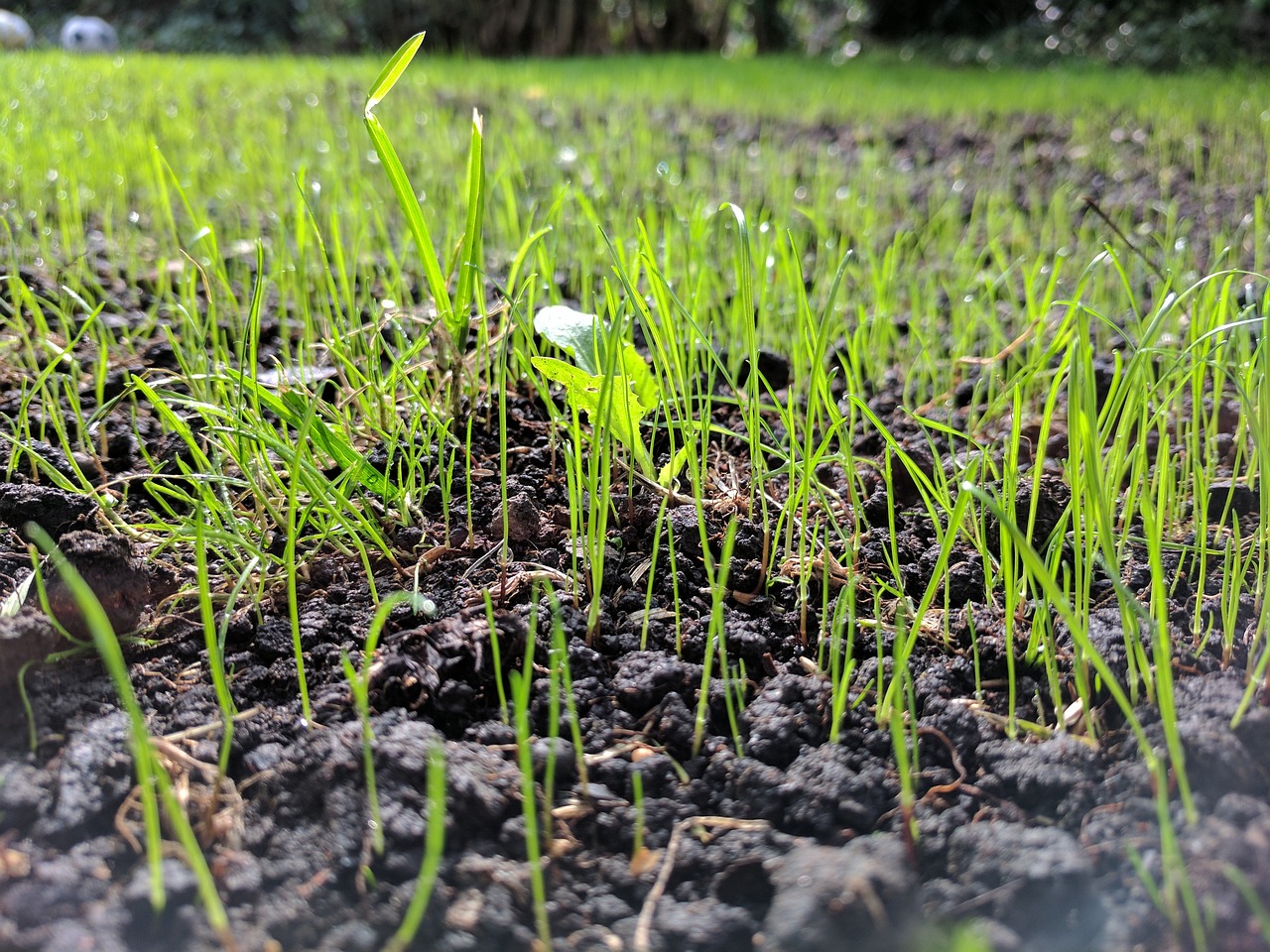
Species Adaptations to Fire
When we think about bushfires, it’s easy to see them as destructive forces, wreaking havoc on landscapes and wildlife. However, nature has a remarkable way of bouncing back, and many species have adapted to not just survive but thrive in post-fire environments. The adaptations of these species are nothing short of fascinating, showcasing the resilience and ingenuity of life on Earth. Let’s dive into the incredible ways in which both flora and fauna have evolved to cope with the flames.
One of the most striking examples of adaptation can be seen in certain plant species. These plants have developed unique traits that allow them to endure the intense heat of bushfires. For instance, fire-resistant flora often features thick, leathery leaves and protective bark that shields them from extreme temperatures. This natural armor enables them to withstand the flames, ensuring their survival and the continuation of their lineage.
Moreover, some plants have evolved to rely on bushfires for their reproductive cycles. Take, for example, the seed germination triggers that many species possess. The heat from a fire can break down hard seed coats or stimulate the release of seeds from cones, allowing them to sprout in nutrient-rich soil that has been enriched by the ash left behind. This process is a perfect example of nature’s resilience, transforming destruction into a fertile ground for new life.
Additionally, trees with thick bark play a crucial role in forest ecosystems post-fire. This thick bark acts as a protective layer, safeguarding vital tissues beneath it from fire damage. As a result, these trees can quickly regrow after a fire event, helping to restore the forest canopy and provide habitat for various species. The ability to bounce back rapidly is essential for maintaining ecological balance in fire-prone areas.
But it’s not just plants that have adapted; animals have also developed fascinating responses to bushfires. Many species exhibit behaviors such as migration to escape the flames, while others have evolved to utilize the post-fire landscape to their advantage. For instance, some birds are known to thrive in recently burned areas, where they find an abundance of food sources like insects that have emerged in the wake of the fire.
In conclusion, the adaptations of species to fire illustrate a remarkable story of survival and resilience. From fire-resistant plants to animals that benefit from the aftermath, these adaptations not only help individual species but also contribute to the overall health and diversity of ecosystems. Understanding these adaptations is crucial for conservation efforts, especially as climate change continues to influence the frequency and intensity of bushfires across the globe.
- How do plants survive bushfires? Many plants have developed fire-resistant traits, such as thick bark and leathery leaves, which protect them from heat.
- What role do bushfires play in seed germination? Some plants require the heat from fires to trigger seed germination, allowing them to grow in nutrient-rich soil.
- How do animals adapt to bushfires? Animals may migrate to safer areas or take advantage of the post-fire environment, where food sources can be plentiful.
- Why are bushfires important for ecosystems? Bushfires promote biodiversity, nutrient cycling, and the regeneration of ecosystems, contributing to their overall health.

Fire-Resistant Flora
When you think of bushfires, the immediate image that comes to mind might be one of destruction and chaos. However, nature has an incredible way of bouncing back, and at the forefront of this regeneration are . These remarkable plants have evolved over millions of years, developing unique adaptations that allow them to not only survive intense heat but also thrive in its aftermath. Imagine a phoenix rising from the ashes; that’s what these plants do, and their resilience is nothing short of inspiring.
One of the most fascinating aspects of fire-resistant flora is their ability to endure extreme temperatures. Some species, like the Banksia and Eucalyptus, have thick, waxy leaves that help protect them from the heat. This protective layer acts like a shield, preventing the plant tissues from being damaged. Furthermore, many of these plants have deep root systems that allow them to access water and nutrients from deeper soil layers, giving them a significant advantage in the harsh conditions that follow a bushfire.
Additionally, fire-resistant plants often have specialized adaptations that enable them to regenerate quickly after a fire. For instance, some species can sprout new growth from their base or root systems even if the above-ground structure has been destroyed. This ability to regrow rapidly is crucial for maintaining the ecosystem's balance, as it provides food and shelter for various animal species that depend on these plants for survival.
Another interesting feature of fire-resistant flora is their role in the nutrient cycle. After a fire, the ash left behind is rich in nutrients, which can enhance soil fertility. Certain plants have adapted to take advantage of this nutrient influx, using it to fuel their growth. For example, the seeds of some native Australian plants are coated with a hard shell that only cracks open when exposed to the intense heat of a fire. This process not only ensures that the seeds germinate in a nutrient-rich environment but also reduces competition from other plants that may not survive the fire.
To illustrate the diversity of fire-resistant flora, consider the following table showcasing some key species and their unique adaptations:
| Plant Species | Adaptation | Post-Fire Behavior |
|---|---|---|
| Banksia | Waxy leaves and thick bark | Rapid regrowth from lignotuber |
| Eucalyptus | Essential oils that promote regeneration | Seed germination triggered by heat |
| Acacia | Deep root systems | Resprouts from roots after fire |
In summary, the existence of fire-resistant flora is a testament to nature's resilience and adaptability. These plants not only survive the flames but also play a pivotal role in the recovery and health of ecosystems post-fire. By providing shelter, food, and a foundation for new life, they help ensure that the cycle of life continues, even after the most devastating of fires. So, the next time you hear about a bushfire, remember that it’s not just about destruction; it’s also about the incredible power of regeneration.
- What are fire-resistant plants? Fire-resistant plants are species that have developed adaptations to survive and thrive in environments prone to bushfires.
- How do fire-resistant plants contribute to ecosystem recovery? They provide food and shelter for wildlife, enhance soil fertility, and help stabilize the ecosystem after a fire.
- Can all plants survive bushfires? No, not all plants can withstand the intense heat of a bushfire. Fire-resistant plants have specific adaptations that allow them to survive.

Seed Germination Triggers
Have you ever wondered how some plants seem to spring back to life after a devastating bushfire? It's a fascinating process that showcases the incredible adaptability of nature. Certain plant species have evolved to rely on the heat from fire as a crucial trigger for their seed germination. This means that without the intense heat generated during a wildfire, their seeds would remain dormant, waiting for the right moment to burst forth into life.
When a bushfire sweeps through an area, it can create a unique environment that is rich in nutrients, making it the perfect setting for new plants to grow. The heat from the fire cracks open the hard seed coats of some species, allowing moisture to penetrate and initiate the germination process. This is a remarkable survival strategy, ensuring that these plants can take advantage of the nutrient-rich soil left behind after the fire has passed.
For instance, species like the Banksia and Grevillea have seeds that require fire to germinate. The intense heat not only triggers the seeds to open but also helps to clear out competing vegetation, giving these fire-adapted species a head start in reclaiming their territory. It’s like nature’s way of saying, "Here’s your chance!"
Moreover, the aftermath of a bushfire often leads to a surge in biodiversity. As the landscape begins to recover, various plant species, including those that depend on fire for germination, can establish themselves in the newly available space. This not only promotes a healthy ecosystem but also provides habitat and food for a variety of animal species that rely on these plants.
To illustrate the relationship between fire and seed germination, consider the following table that showcases some common fire-adapted plants and their germination triggers:
| Plant Species | Germination Trigger | Notes |
|---|---|---|
| Banksia | Heat from fire | Seeds require exposure to high temperatures. |
| Grevillea | Heat and smoke | Smoke can also stimulate germination. |
| Hakea | Heat from fire | Seeds can remain dormant for years. |
| Eucalyptus | Heat from fire | Thick bark protects the tree while seeds germinate. |
In conclusion, the relationship between bushfires and seed germination is a prime example of nature's resilience and ingenuity. These adaptations not only ensure the survival of specific plant species but also play a vital role in the overall health and recovery of ecosystems affected by fire. So, the next time you hear about a bushfire, remember that it’s not just destruction; it’s also a catalyst for new growth and a testament to the power of regeneration.
- What types of plants need fire to germinate? Many native Australian species, like Banksia and Grevillea, require fire to trigger their germination process.
- How does fire improve soil health? Fire can release nutrients locked in vegetation, enhancing soil fertility and structure.
- Are all plants harmed by bushfires? Not all plants are harmed; some have evolved to thrive in post-fire conditions.
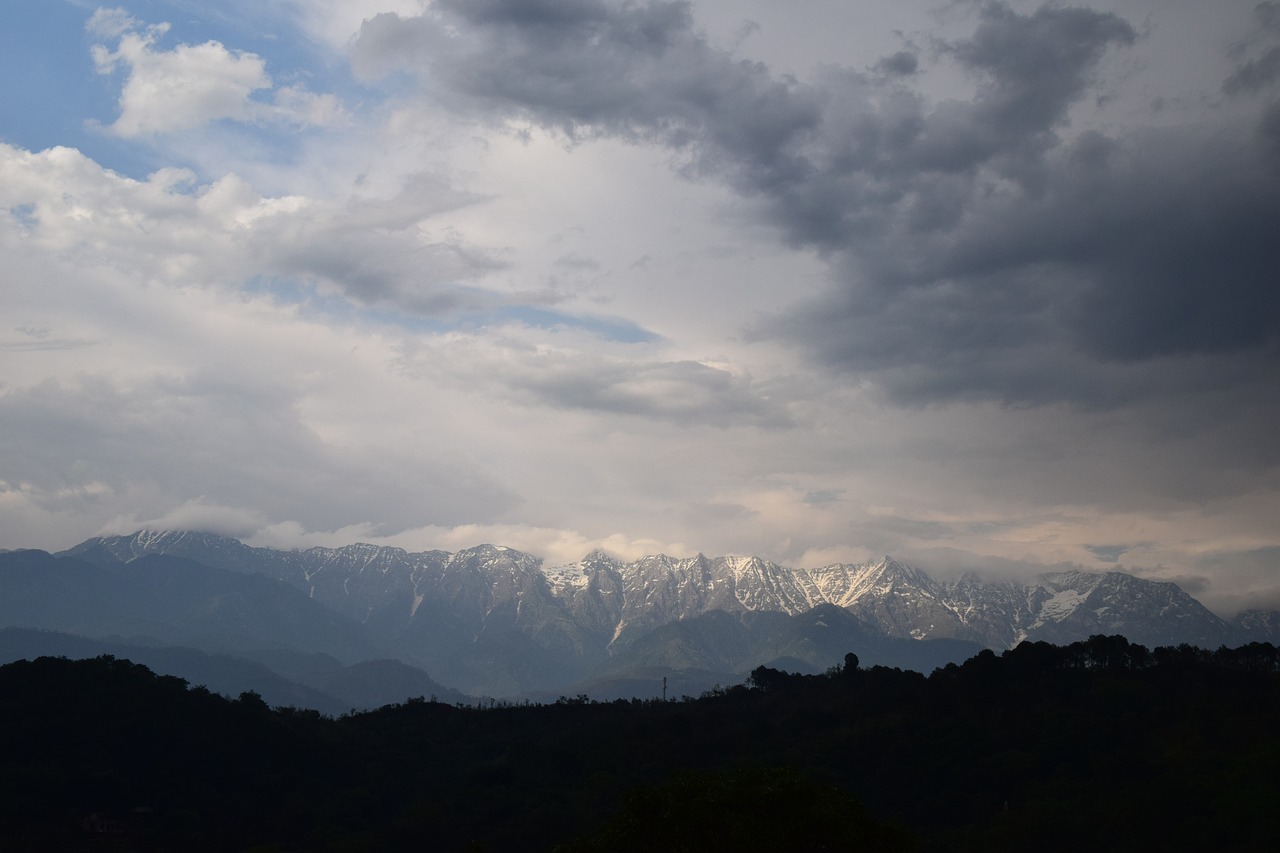
Thick Bark and Regrowth
When you think of a tree standing tall amidst the chaos of a bushfire, you might picture a resilient giant, its thick bark acting as a shield against the flames. This remarkable adaptation is not just a survival tactic; it's a key player in the story of ecosystem recovery. Trees like the Eucalyptus and Sequoiadendron have evolved over millennia to develop bark that can withstand extreme temperatures. The thick outer layer serves as insulation, protecting the vital living tissues beneath from being scorched. Just imagine it as a firefighter's protective gear, allowing the tree to endure the heat while safeguarding its core.
After a fire, these trees can bounce back with astonishing speed. The thick bark not only protects them during the blaze but also enables rapid regrowth once the flames have passed. This regrowth is crucial for restoring habitat, providing shelter and food for various species, and contributing to the overall health of the forest. The bark's ability to insulate against heat allows trees to maintain their moisture levels, giving them a fighting chance to sprout new leaves and branches shortly after the fire event.
Interestingly, the process of regrowth is not just about survival; it's about thriving in a post-fire landscape. The fire clears out dead and decaying matter, creating space for sunlight to reach the forest floor. This newfound light encourages a burst of growth among the surviving trees and the seedlings that take advantage of the nutrient-rich ash left behind. It's nature's way of hitting the reset button, allowing for a vibrant resurgence of life.
In addition to their thick bark, many of these trees have adapted their reproductive strategies to ensure species continuity. For example, some species produce seeds that are specifically designed to germinate in the nutrient-rich soil created by fire. This means that while the flames may seem destructive, they are, in fact, a catalyst for new life. The cycle of destruction and rebirth is a powerful reminder of nature's resilience.
To further illustrate the importance of thick bark and its role in regrowth, consider the following table that highlights various tree species known for their fire-resistant traits:
| Tree Species | Thick Bark Characteristics | Regrowth Benefits |
|---|---|---|
| Eucalyptus | Thick, fibrous bark | Rapid regrowth; habitat restoration |
| Sequoiadendron | Fire-resistant, thick bark | Long-term survival; supports diverse ecosystems |
| Pinus (Pine) | Thick, insulating bark | Encourages new growth; improves soil health |
In summary, the thick bark of certain tree species plays a pivotal role in their survival during bushfires and their subsequent regrowth. These adaptations not only ensure the continuity of the species but also contribute to the broader ecological recovery of the forest. It's a beautiful dance of resilience and regeneration, reminding us that even in the aftermath of destruction, life finds a way to flourish.
- How does thick bark help trees survive bushfires? Thick bark acts as insulation, protecting the inner tissues from extreme heat, allowing trees to survive the flames.
- Which tree species are known for their fire-resistant bark? Species like Eucalyptus, Sequoiadendron, and various Pines are well-known for their thick, fire-resistant bark.
- What role does fire play in the regeneration of ecosystems? Fire clears out old vegetation, enriches the soil with nutrients, and creates space for new growth, promoting biodiversity.

Animal Responses to Fire
When bushfires sweep through an ecosystem, they don't just reshape the landscape; they also trigger remarkable responses from the animal kingdom. These responses can vary significantly among different species, showcasing the incredible adaptability of wildlife. Some animals, like the koala and kangaroo, may instinctively flee to safer areas, while others have developed unique survival strategies that allow them to endure the flames. Isn't it fascinating how life finds a way to persist even under the harshest conditions? The ability of animals to react to fire is not merely about survival; it’s a testament to the resilience ingrained in nature.
One of the most striking adaptations seen in fire-prone regions is the phenomenon of migration. Many animal species, such as certain birds and mammals, have evolved to recognize the signs of an impending fire, allowing them to relocate to safer habitats. For instance, the Eastern Grey Kangaroo has been observed moving to areas that are less likely to be affected by flames, showcasing their innate ability to seek refuge. This instinctive behavior not only aids in individual survival but also contributes to the overall stability of the ecosystem as these animals help maintain the balance of species in their new locations.
In addition to migration, some animals exhibit behavioral changes in response to fire. For example, certain reptiles and amphibians may burrow deeper into the ground or hide under rocks to escape the heat. This behavior is crucial for their survival, as it allows them to wait out the fire until it has passed. Post-fire, these animals often emerge to find a transformed landscape rich in new growth, providing them with ample food and shelter. It's almost like nature's way of rebooting the system, don’t you think?
Interestingly, the aftermath of a bushfire can also create new opportunities for some species. The blackened earth left behind can attract insects, which in turn draws in predators like birds of prey. This can lead to a temporary boost in populations of certain animals, demonstrating how fire can reshape not only the physical environment but also the dynamics of food webs. In essence, while fire may seem destructive, it can also pave the way for new beginnings.
The role of fire in shaping animal behavior and populations is a complex interplay of survival, adaptation, and ecological balance. To better understand these dynamics, researchers often study fire-prone environments and the species that inhabit them. Through this research, we gain valuable insights into how ecosystems recover and thrive after fire. The resilience of wildlife in the face of such adversity is a powerful reminder of nature’s tenacity.
In summary, the responses of animals to bushfires are as varied as the species themselves. From migration to behavioral adaptations, these responses play a critical role in the survival of species and the overall health of the ecosystem. As we continue to study these fascinating interactions, we can better appreciate the intricate balance of life that exists in fire-affected areas.
- How do animals know when a fire is approaching?
Many animals have heightened senses that allow them to detect smoke or changes in their environment, prompting them to flee before the flames arrive.
- Can animals survive a bushfire?
Yes, many animals have adaptations that help them survive bushfires, such as burrowing, migrating, or finding shelter in fire-resistant habitats.
- What happens to animal populations after a fire?
Post-fire environments often see a temporary increase in certain animal populations due to the availability of new food sources and habitat recovery.
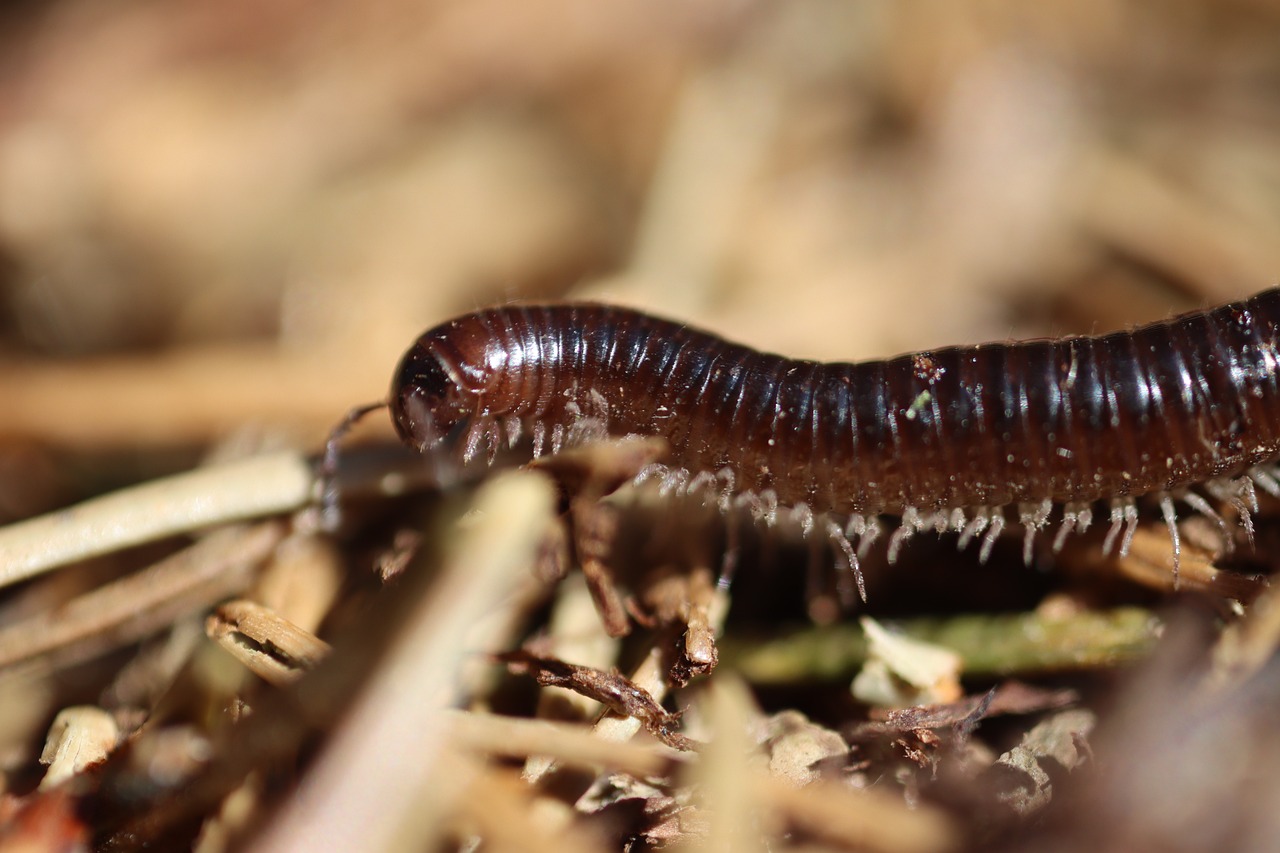
Post-Fire Ecosystem Recovery
After the flames have died down and the smoke has cleared, the journey of recovery begins for ecosystems that have experienced bushfires. This process is not just a mere return to normalcy; it is often a transformative phase that can lead to increased biodiversity and a rejuvenated landscape. The aftermath of a fire can be likened to a blank canvas, where nature begins to paint a new picture, filled with life and resilience. But what does this recovery process entail? Let’s delve into the stages and factors that influence how ecosystems bounce back after the heat has subsided.
The recovery process typically unfolds in several stages. Initially, the landscape may appear desolate, with charred remains of flora and fauna. However, within this apparent devastation lies the potential for renewal. In the first stage, known as primary succession, the soil starts to recover. The heat from the fire releases vital nutrients locked in the organic matter, enriching the soil and creating a fertile ground for new growth. This is where the magic begins—seeds that have lain dormant for years can now germinate, thanks to the nutrient boost provided by the ash.
Following this initial phase, the second stage, or secondary succession, sees the emergence of opportunistic species, often referred to as pioneer species. These are typically hardy plants that can thrive in the harsh conditions of a post-fire environment. They play a crucial role in stabilizing the soil and providing shade and shelter for other species that will follow. As these pioneers establish themselves, they set the stage for more complex ecosystems to develop.
However, the recovery journey isn’t without challenges. One significant factor influencing the recovery process is the health of the soil. Healthy soil is essential for supporting new plant life and maintaining the ecosystem's balance. Studies have shown that bushfires can actually improve soil health by:
- Releasing essential nutrients such as nitrogen and phosphorus.
- Enhancing soil structure, which improves water retention.
- Reducing competition from invasive species that may struggle in nutrient-rich conditions.
Despite these benefits, invasive species can pose a significant threat to recovering ecosystems. After a fire, the disturbed environment may become a hotspot for non-native plants and animals that can outcompete local species. Effective management strategies are essential to prevent these invasive species from disrupting the delicate balance of the recovering ecosystem. This may include:
- Monitoring and controlling invasive species populations.
- Implementing replanting programs with native species.
- Educating the community about the importance of protecting native flora and fauna.
In summary, the post-fire recovery of ecosystems is a dynamic and multifaceted process. It involves a series of stages that lead to increased biodiversity and healthier landscapes. While the initial aftermath of a bushfire may appear bleak, it is essential to recognize the resilience of nature and the remarkable ability of ecosystems to regenerate. With the right management and conservation efforts, these landscapes can not only recover but thrive, showcasing the incredible power of life to rebound from adversity.
Q: How long does it take for an ecosystem to recover after a bushfire?
A: The recovery time can vary significantly depending on the severity of the fire, the ecosystem type, and environmental conditions. Some areas may show signs of recovery within a few months, while others might take several years.
Q: Are all plants affected equally by bushfires?
A: Not all plants are equally affected. Many native species have evolved adaptations to survive fire, while others may be more vulnerable and take longer to recover.
Q: What role do animals play in post-fire recovery?
A: Animals contribute to recovery by aiding in seed dispersal and pollination, which can help re-establish plant communities and maintain ecological balance.
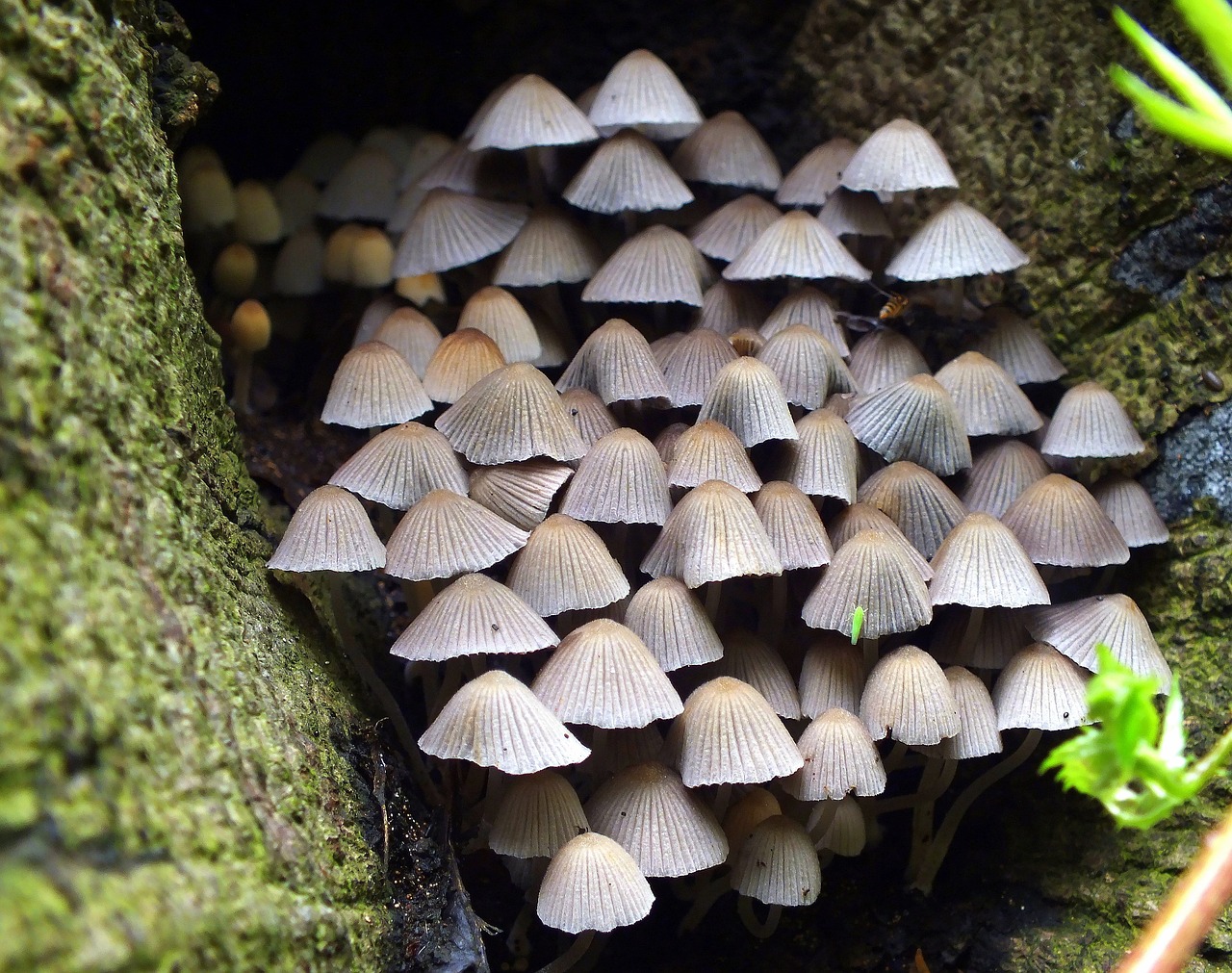
Soil Health Restoration
The aftermath of a bushfire often leaves behind a landscape that appears charred and lifeless, but beneath the surface, a remarkable transformation is taking place. is one of the most significant processes that occur following a fire event. As the flames consume the vegetation above, they also set off a chain reaction that revitalizes the soil, enhancing its nutrient content and overall structure. This process is akin to nature hitting the reset button, allowing ecosystems to rebound and flourish anew.
One of the primary ways bushfires contribute to soil health is through the release of nutrients. When plants burn, they decompose and release essential elements such as nitrogen, phosphorus, and potassium back into the soil. These nutrients are vital for plant growth and can significantly improve soil fertility. In fact, studies have shown that post-fire soils often exhibit higher levels of these nutrients compared to untouched areas. This nutrient cycling is crucial for the recovery of the ecosystem, as it provides a fertile ground for new plants to take root.
Moreover, the intense heat generated by bushfires can alter the physical properties of the soil. For instance, it can create a more porous structure, enhancing water infiltration and retention. This is particularly important in arid regions, where water is a precious resource. As the soil becomes more capable of holding moisture, it supports the growth of a diverse range of plant species, which in turn attracts various animal life, contributing to biodiversity.
However, it's essential to recognize that the restoration of soil health is not a straightforward process. Several factors influence how quickly and effectively an ecosystem can recover after a fire, including:
- Soil Type: Different soil types respond differently to fire. Sandy soils, for example, may recover more quickly than clay soils.
- Climate Conditions: Rainfall patterns and temperature fluctuations play a significant role in how quickly vegetation returns.
- Vegetation Type: The presence of fire-adapted species can facilitate faster recovery, as they are more likely to thrive in post-fire conditions.
In some cases, however, the recovery process can be hindered by invasive species that thrive in disturbed environments. These species can outcompete native plants, leading to a decline in biodiversity and altering the ecosystem's natural balance. Therefore, effective management strategies are essential to ensure that the recovering ecosystem can flourish without being overwhelmed by invaders.
In summary, the restoration of soil health after a bushfire is a complex yet fascinating process that highlights nature's resilience. By understanding the intricate relationship between fire and soil, we can better appreciate the vital role bushfires play in ecosystem regeneration. As we continue to study these processes, we gain valuable insights that can inform conservation efforts and help maintain the delicate balance of our natural landscapes.
- How do bushfires improve soil health? Bushfires release nutrients back into the soil and improve its structure, enhancing fertility and water retention.
- What factors affect soil recovery after a fire? Soil type, climate conditions, and the presence of native vegetation all influence recovery rates.
- Can invasive species impact post-fire recovery? Yes, invasive species can outcompete native plants and disrupt the recovery process, making management essential.
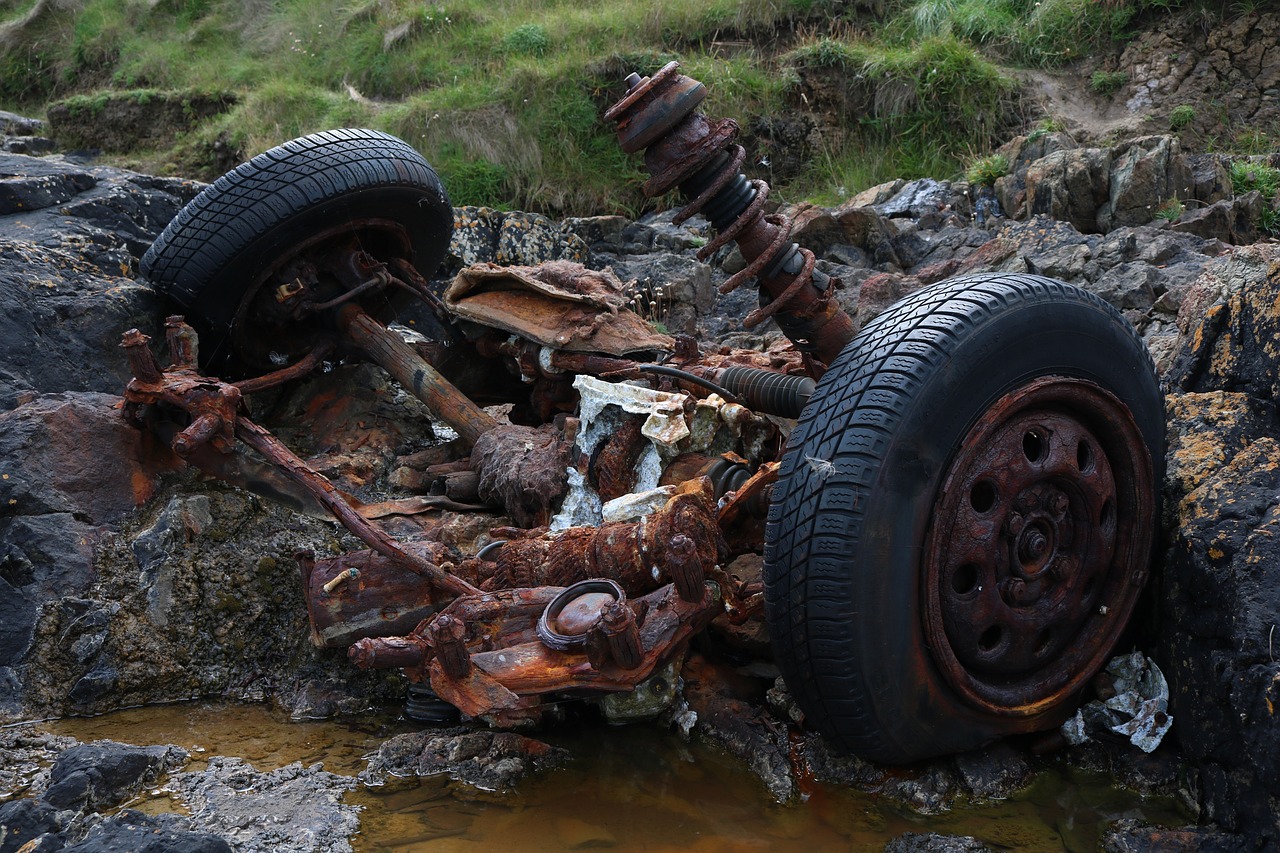
Invasive Species Management
After a bushfire, the landscape may appear charred and desolate, but nature is remarkably resilient. However, this recovery phase can also create a perfect storm for invasive species to take root and flourish. These non-native species can outcompete local flora and fauna, disrupt the delicate balance of the ecosystem, and ultimately hinder the recovery process. Therefore, effective is crucial in ensuring that native species can reclaim their rightful place in the ecosystem.
One of the first steps in managing invasive species post-fire is to conduct a thorough assessment of the affected area. This involves identifying which species have taken hold and understanding their potential impacts on the local ecosystem. For instance, some invasive plants can grow rapidly, monopolizing resources like sunlight and water, which can severely limit the growth of native plants. In contrast, certain invasive animals may prey on or compete with native species, further threatening biodiversity.
To combat these invasives, land managers often employ a variety of strategies, including:
- Mechanical Removal: This involves physically removing invasive species from the area. Techniques can range from hand-pulling small plants to using heavy machinery for larger infestations.
- Chemical Control: Herbicides and pesticides can be effective in controlling invasive species, but they must be used cautiously to avoid harming native plants and animals.
- Biological Control: Introducing natural predators or diseases that specifically target invasive species can help control their populations without harming native species.
Moreover, it's essential to monitor the recovery of the ecosystem continuously. This ongoing assessment helps identify any new invasions early, allowing for timely intervention. The use of technology, such as drones and satellite imagery, can be incredibly beneficial in tracking changes in vegetation and spotting invasive species before they become a significant issue.
In addition to these management strategies, community engagement plays a vital role in invasive species management. Local volunteers can participate in restoration projects, helping to remove invasive species and replant native ones. This not only fosters a sense of community but also raises awareness about the importance of biodiversity and ecosystem health.
Ultimately, the goal of invasive species management after bushfires is to create a thriving, balanced ecosystem where native species can flourish once again. By understanding the threats posed by invasive species and implementing effective management strategies, we can help ensure that the landscape recovers not just in appearance but in ecological integrity as well.
- What are invasive species? Invasive species are non-native organisms that can cause harm to the environment, economy, or human health.
- How do bushfires contribute to the spread of invasive species? Bushfires can create disturbed environments that are more susceptible to invasion by non-native species due to the availability of resources and reduced competition.
- What are some common invasive species found after bushfires? Common invasive species may include certain grasses, weeds, and non-native animals that can disrupt local ecosystems.
- How can I help manage invasive species in my area? You can participate in local conservation efforts, report sightings of invasive species, and volunteer for restoration projects.
Frequently Asked Questions
- What role do bushfires play in ecosystem regeneration?
Bushfires are essential for ecosystem regeneration as they help to clear old vegetation, allowing new growth to flourish. They promote biodiversity by creating a mosaic of habitats that support various species. This natural process ensures that ecosystems remain healthy and resilient over time.
- How do some plants survive bushfires?
Many plants have evolved unique adaptations to survive bushfires. For instance, some species possess thick bark that protects their vital tissues from extreme heat, while others rely on fire to trigger seed germination. These adaptations are crucial for the recovery of plant communities after a fire event.
- What happens to animal species after a bushfire?
After a bushfire, animal species may exhibit various responses, including migration to safer areas or changes in behavior to adapt to the altered landscape. Some species may thrive in the post-fire environment due to increased food availability, while others may struggle, highlighting the importance of understanding these dynamics for conservation efforts.
- How does bushfire impact soil health?
Bushfires can significantly enhance soil health by releasing nutrients locked in vegetation and improving soil structure. The heat from the fire can also help break down organic matter, allowing for better nutrient cycling and creating a fertile environment for new plant growth.
- Are invasive species a concern after bushfires?
Yes, post-fire environments can be particularly vulnerable to invasive species, which may outcompete native flora and fauna. Effective management strategies are essential to control these invasive species and ensure that the recovering ecosystem can thrive without disruption.



















